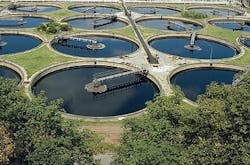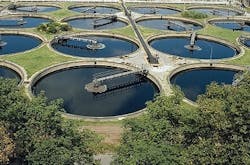Japanese fiber carrier trial aims to improve wastewater treatment
TOKYO, Japan – A Japanese consortium project using fiber carriers to reduce sludge in wastewater treatment has been adopted by the country’s Ministry of Land, Infrastructure, Transport and Tourism (MLIT).
Involving the Japan Sewage Works Agency, the technology is being field tested at the 2,500 m3/day Tatsuno Water Treatment Center, Nagano Prefecture.
The agency will provide wastewater treatment services, engineering firm IHI Enviro will provide the wastewater treatment equipment and Teijin will be providing the special fiber carriers.
One of the existing reactors at the facility has been renovated to use the demonstration technology, with results to be compared against the conventional oxidation ditch (OD) process.
It is hoped the adoption of the technology can make wastewater treatment easier by enabling operators to skip the step of controlling the activated sludge concentration and return sludge volume.
Using a multi-staged reactor, fiber carriers are placed at a distance to prevent carriers from sticking together.
A shortage of engineers due to urban migration, aging populations and financial difficulties are causing problems for local municipalities when it comes to sewage management in Japan.
In addition, high sewage treatment costs per unit for small plants put pressure on their finances. Waste sludge disposal costs and operation management commissions are higher for small municipalities than the national average.
The B-DASH Project was started by MLIT in 2011 to accelerate the research, development and commercialization of new technologies to substantially reduce sewage service costs, create renewable energy and support Japanese enterprises’ overseas water business expansion.
###
Read more

